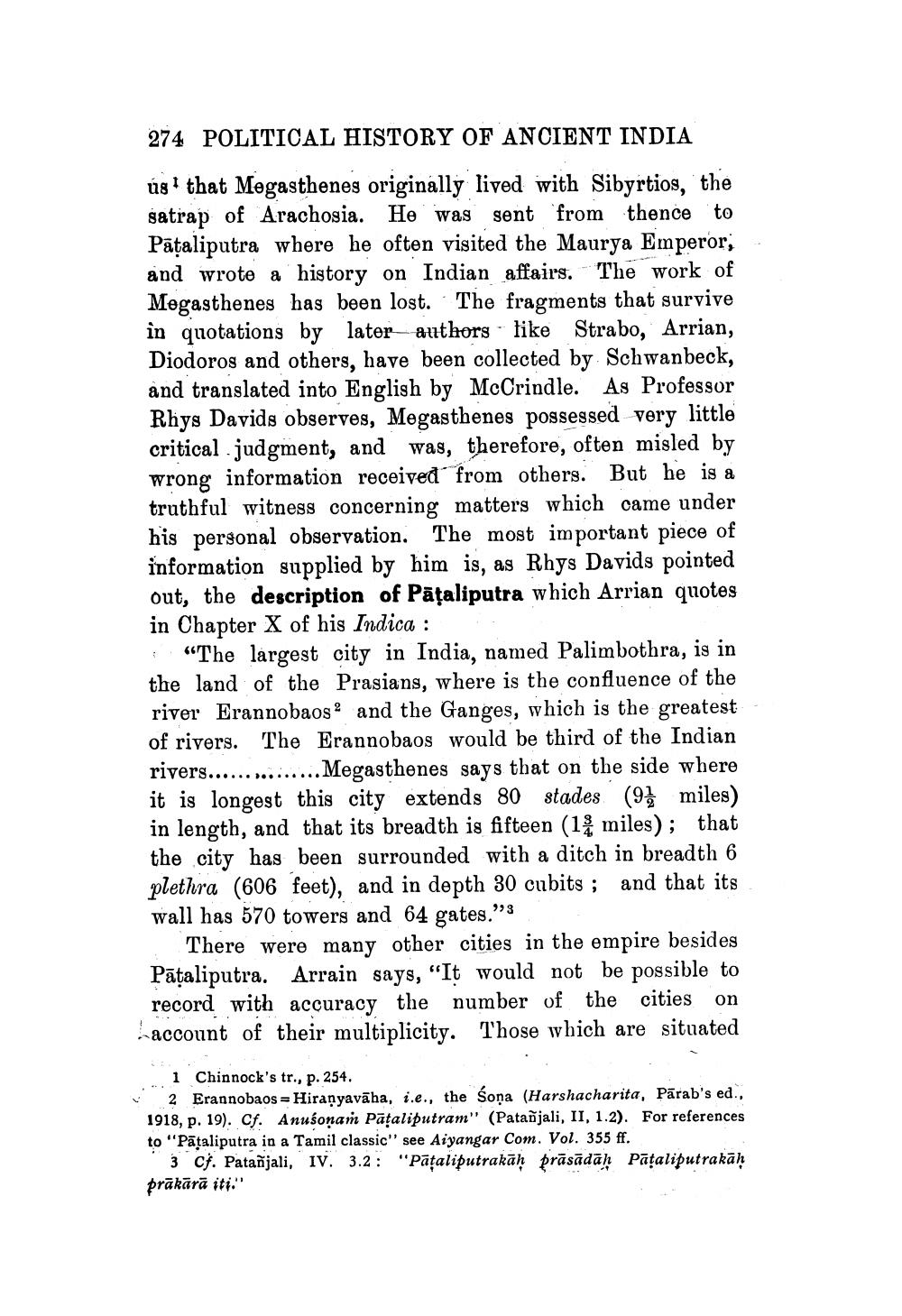________________
274 POLITICAL HISTORY OF ANCIENT INDIA ugthat Megasthenes originally lived with Sibyrtios, the satrap of Arachosia. He was sent from thence to Pātaliputra where he often visited the Maurya Emperor; and wrote a history on Indian affairs. The work of Megasthenes has been lost. The fragments that survive in quotations by later authors like Strabo, Arrian, Diodoros and others, have been collected by Schwanbeck, and translated into English by McCrindle. As Professor Rhys Davids observes, Megasthenes possessed very little critical . judgment, and was, therefore, often misled by wrong information received from others. But he is a truthful witness concerning matters which came under his personal observation. The most important piece of information supplied by him is, as Rhys Davids pointed out, the description of Pāțaliputra which Arrian quotes in Chapter X of his Indica :
"The largest city in India, named Palimbothra, is in the land of the Prasians, where is the confluence of the river Erannobaos ? and the Ganges, which is the greatest of rivers. The Erannobaos would be third of the Indian rivers................. Megasthenes says that on the side where it is longest this city extends 80 stades (91 miles) in length, and that its breadth is fifteen (1. miles); that the city has been surrounded with a ditch in breadth 6 plethra (606 feet), and in depth 30 cubits; and that its wall has 570 towers and 64 gates."
There were many other cities in the empire besides Pāțaliputra. Arrain says, "It would not be possible to record with accuracy the number of the cities on account of their multiplicity. Those which are situated
...1 Chinnock's tr., p. 254.
2. Erannobaos = Hiranyavāha, i.e., the soņa (Harshacharita, Pārab's ed., 1918, p. 19). Cf. Anušonam Pāțaliputram" (Patañjali, II, 1.2). For references to "Pāțaliputra in a Tamil classic" see Aiyangar Com. Vol. 355 ff.
3 Cf. Patañjali, IV. 3.2: "Pataliputrakāḥ prāsādāh Pāšaliputrakāḥ prākārā iti."




